
Have you ever wondered about the hidden heroes of industrial piping? Flanges may seem simple, but they play a crucial role in connecting pipes safely. This article explores two key types: slip-on and weld neck flanges. We’ll uncover their differences in materials, design, and uses. By the end, you’ll understand which flange is best for various pressure systems and industries. Get ready to see piping connections in a whole new light!
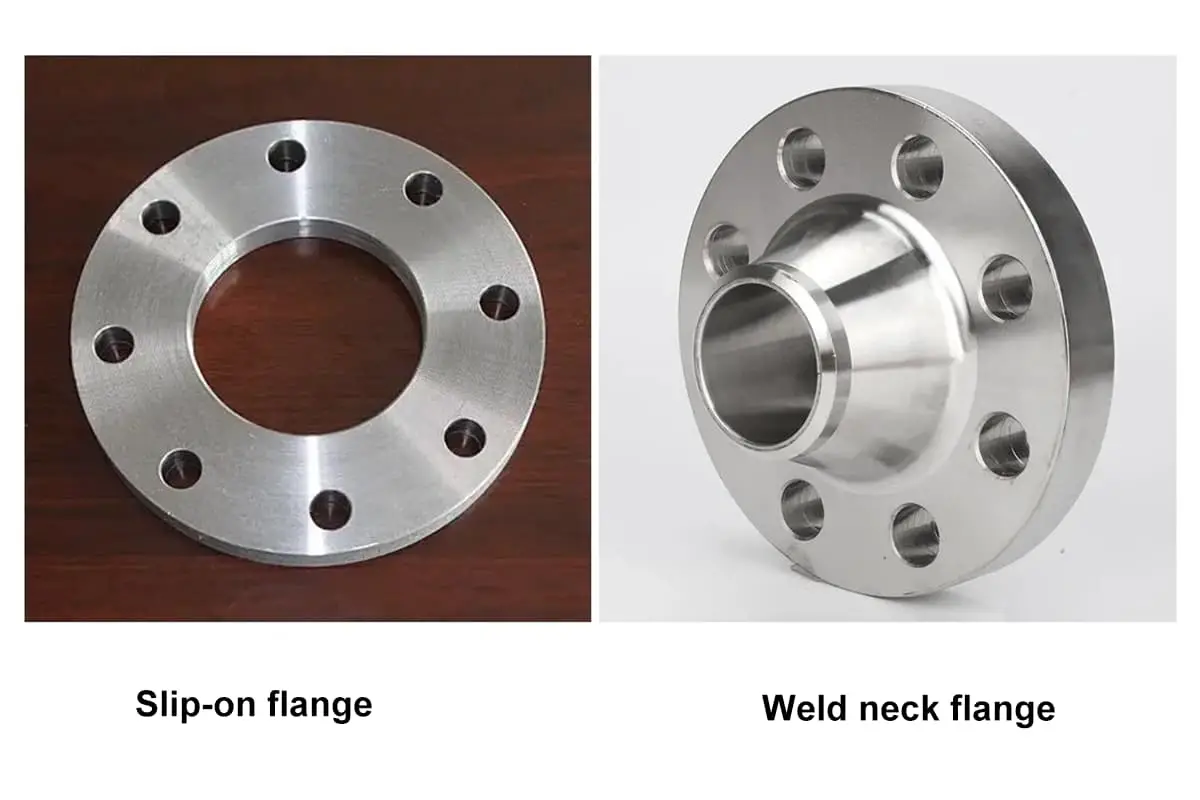
Flat Welding Flange and Welding Neck Flange are two main forms of flange connections. Today we will discuss the differences between the two, here’s a summary for everyone.
● Slip-on flange:
Mostly usesordinary steel plates (such as carbon steel plates), relatively low cost;
● Weld neck flange:
Mostly made offorged steel, higher density, stronger mechanical properties, and higher cost;
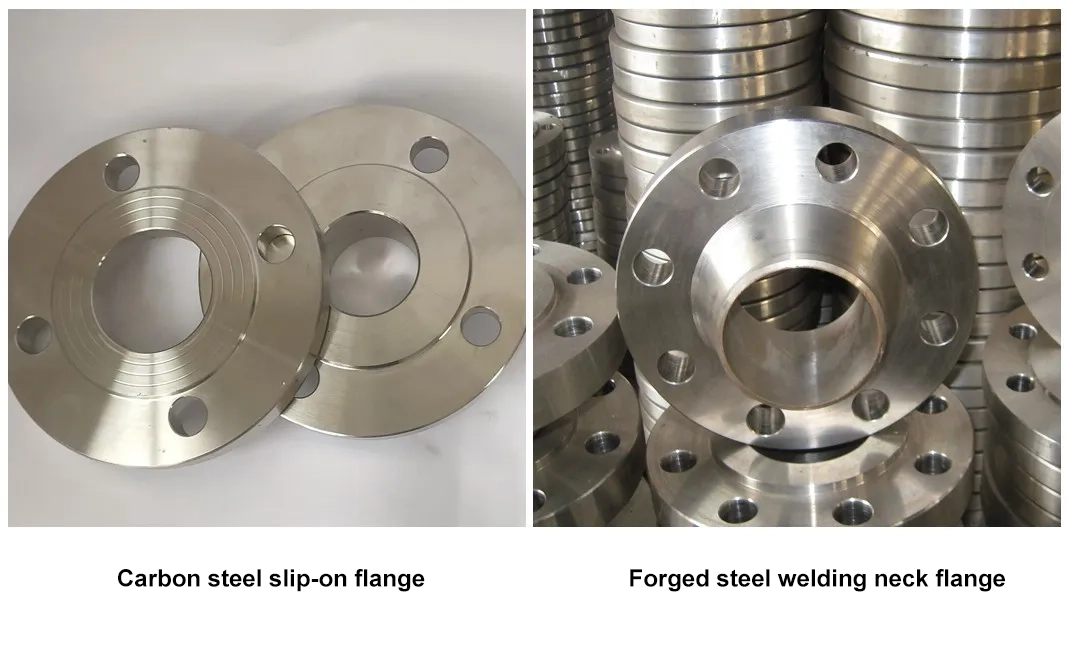
● Slip-on flange:
The flange plate is thinner, without a protruding neck design, the flange disc is directly welded to the pipe, and cannot be directly connected to butt-weld fittings.
● Weld neck flange:
Usually has a protruding long neck design, enhancing the rigidity and strength of the flange,the neck matches the pipe’s outer diameter, not only can it connect with pipes, but also can directly connect with various butt-weld fittings, such as tees, elbows, etc.
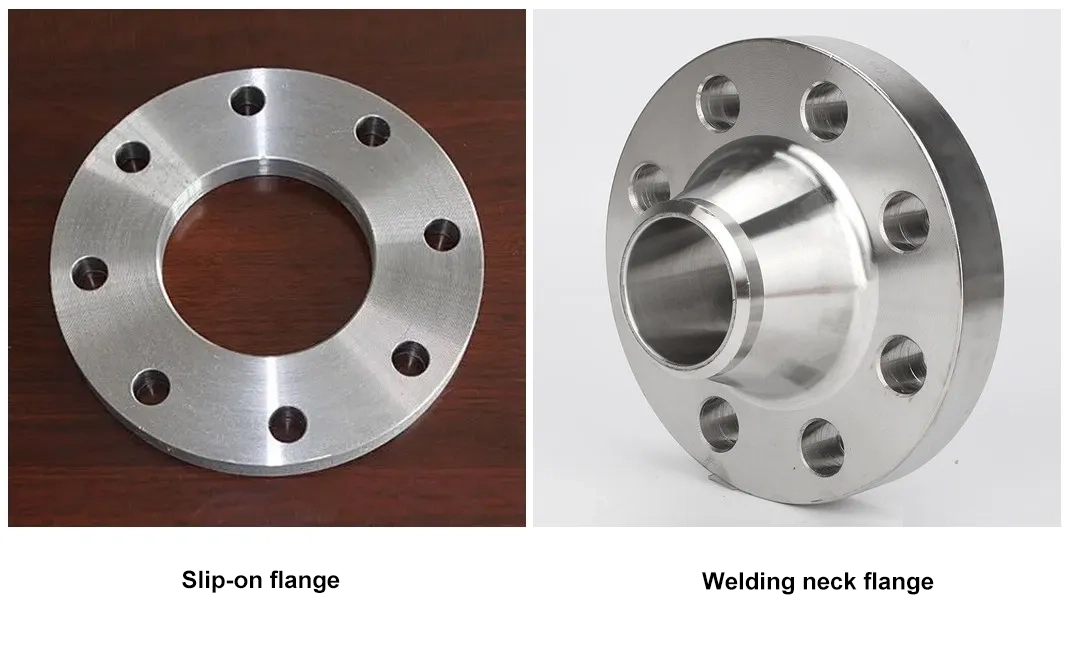
● Slip-on flange:
Slip-on flange usesfillet weld, that is, the weld form between the pipe and the flange is a two-angle circumferential weld, which cannot be inspected by X-ray.

● Weld neck flange:
Weld neck flange uses butt weld, requiring double-sided welding inside and outside the pipe, which can be inspected by X-ray or other methods to ensure weld quality.
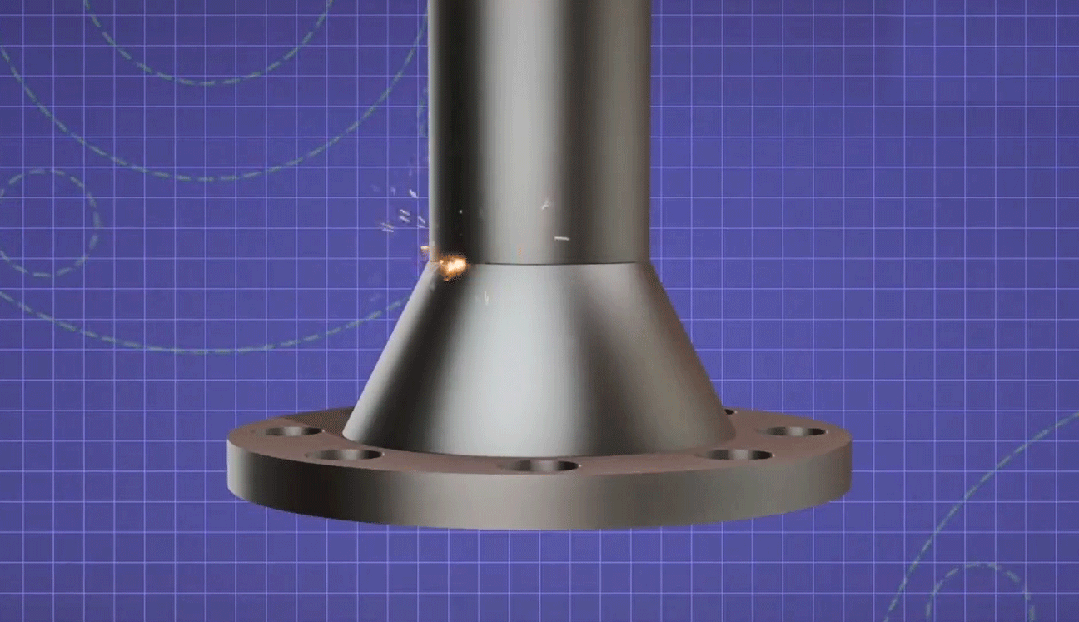
● Slip-on flange:
Because the weld is located on the outside of the flange, the sealing performance is relatively weak and may leak under high pressure or frequent temperature changes.
● Weld neck flange:
Because the weld is located on both the inside and outside of the flange, the sealing performance is stronger and can withstand higher pressure and temperature changes.
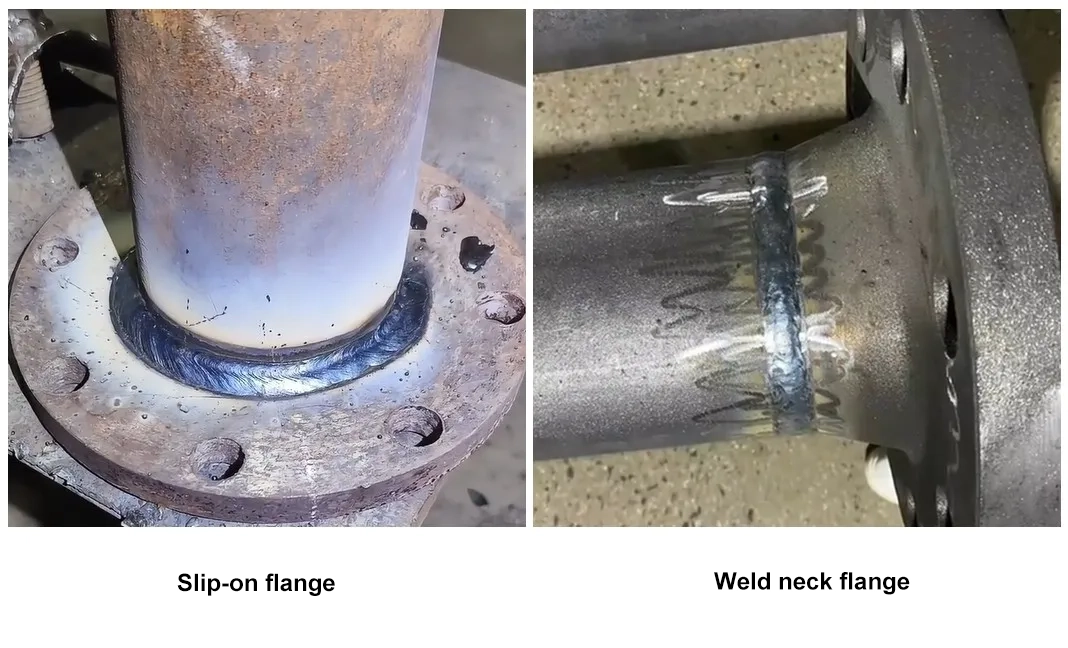
● Slip-on flange:
Due to single-sided welding, the load-bearing capacity is lower, suitable for medium to low pressure piping systems.
● Weld neck flange:
Due to double-sided welding, the load-bearing capacity is higher, suitable for high pressure piping systems.
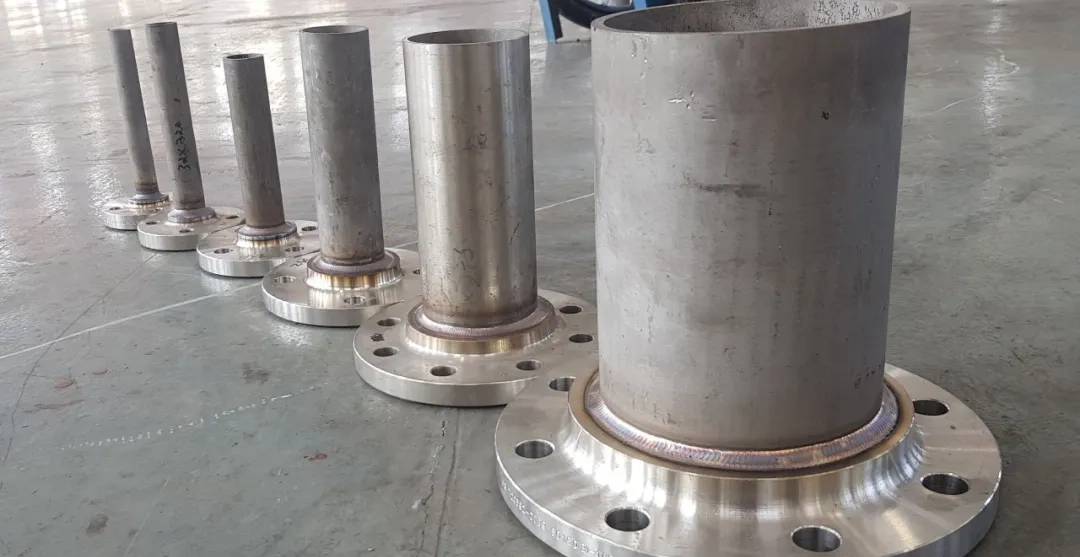
● Slip-on flange:
Suitable for low pressure, small diameter pipelines, widely used in construction, water supply and drainage, HVAC and other industries;
● Weld neck flange:
Suitable for high pressure, large diameter pipelines, widely used in petrochemical, power, nuclear energy and other high-requirement industries;
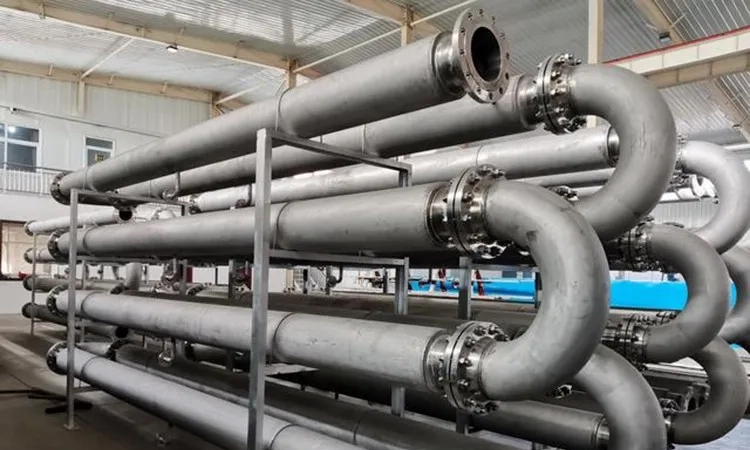
● Slip-on flange:
Installation is relatively simple, but due to single-sided welding, more attention may be needed to weld quality during maintenance.
● Weld neck flange:
Installation is more complex, but due to double-sided welding, weld quality is more assured, requiring less maintenance.
In summary, flat welding flanges and butt welding flanges have significant differences in terms of material, structure, welding, pressure, and application. Essentially, flat welding flanges have relatively lower connection strength and are suitable for medium and low-pressure piping systems, while butt welding flanges have higher connection strength and are suitable for high-pressure and high-temperature piping systems.








